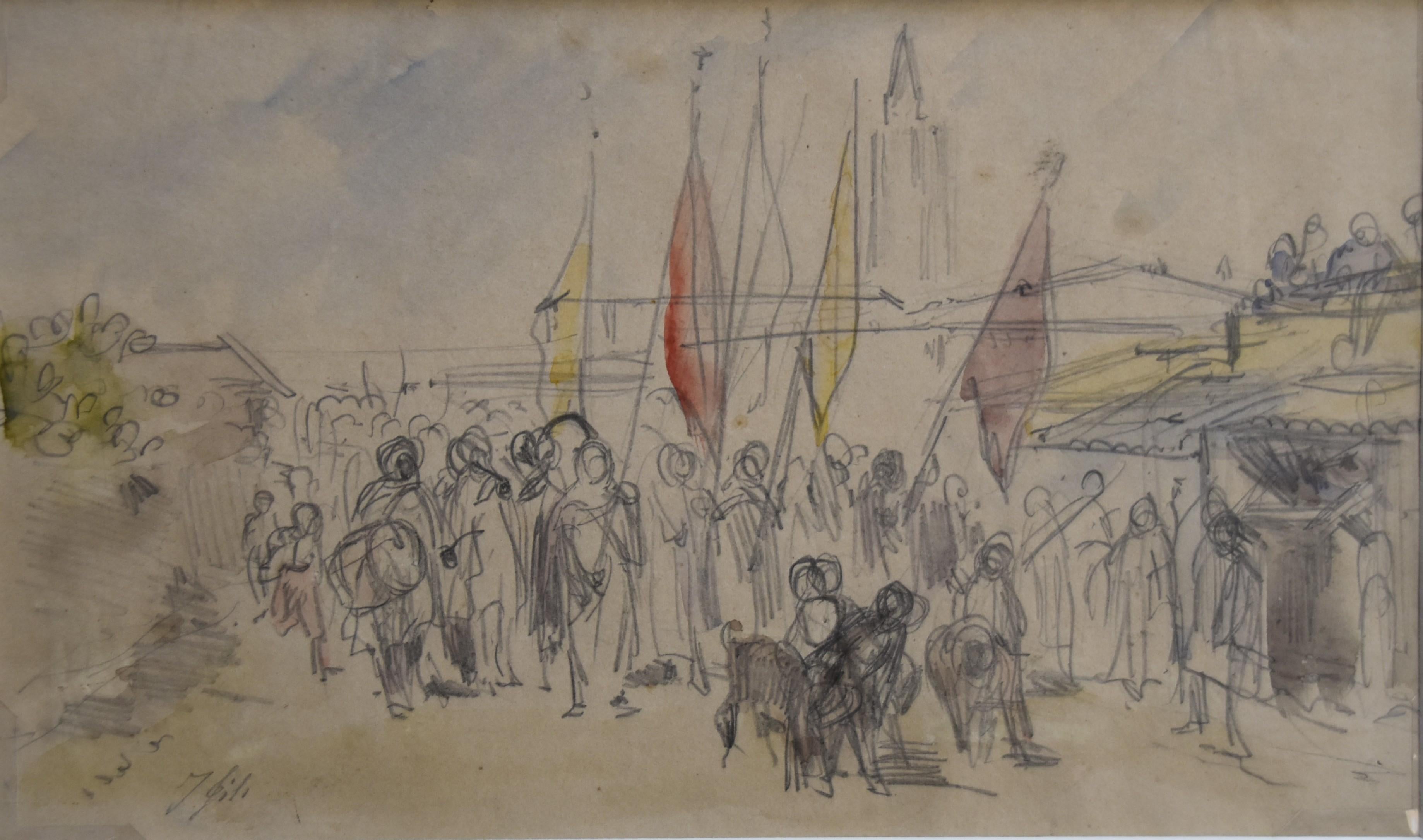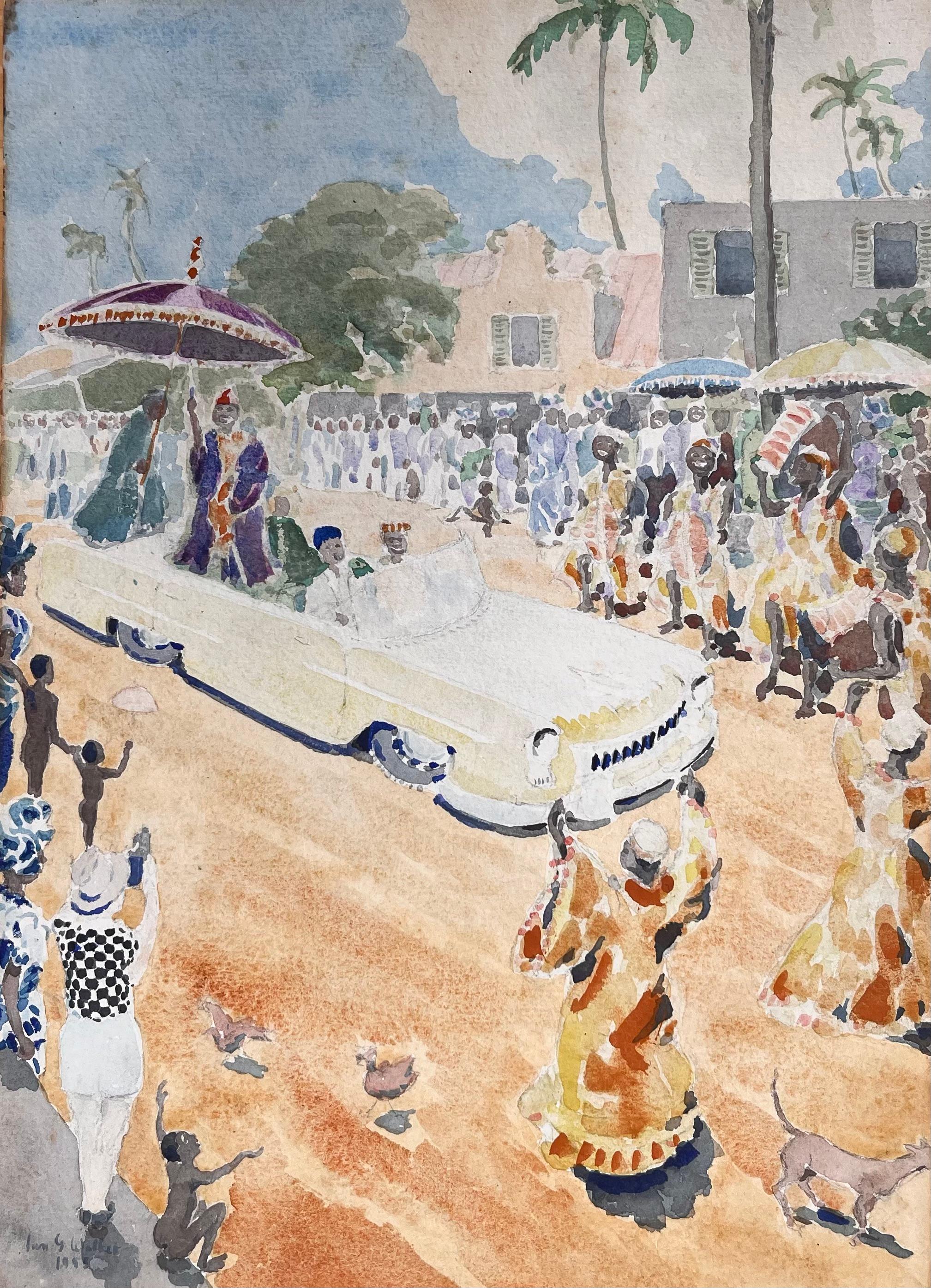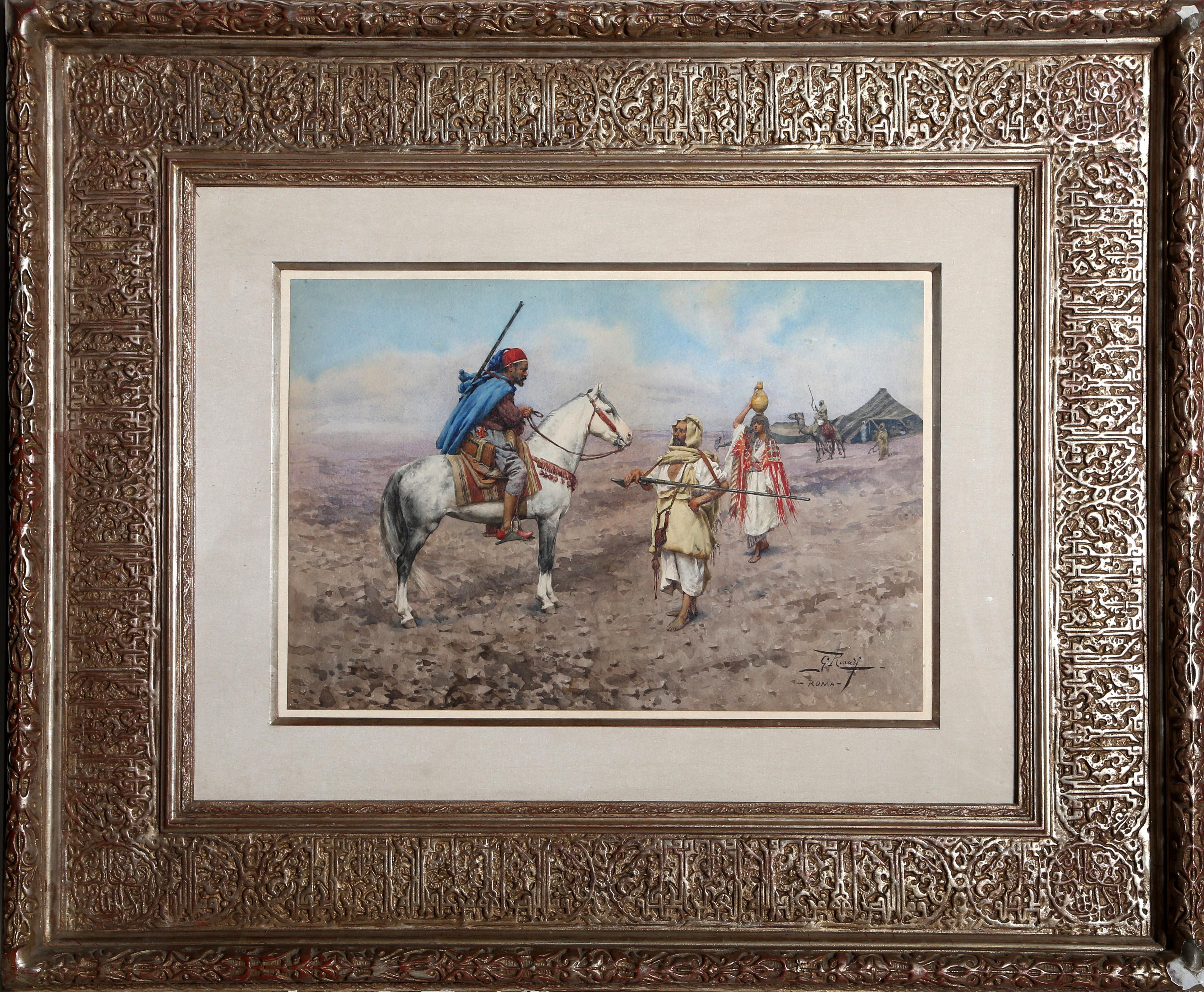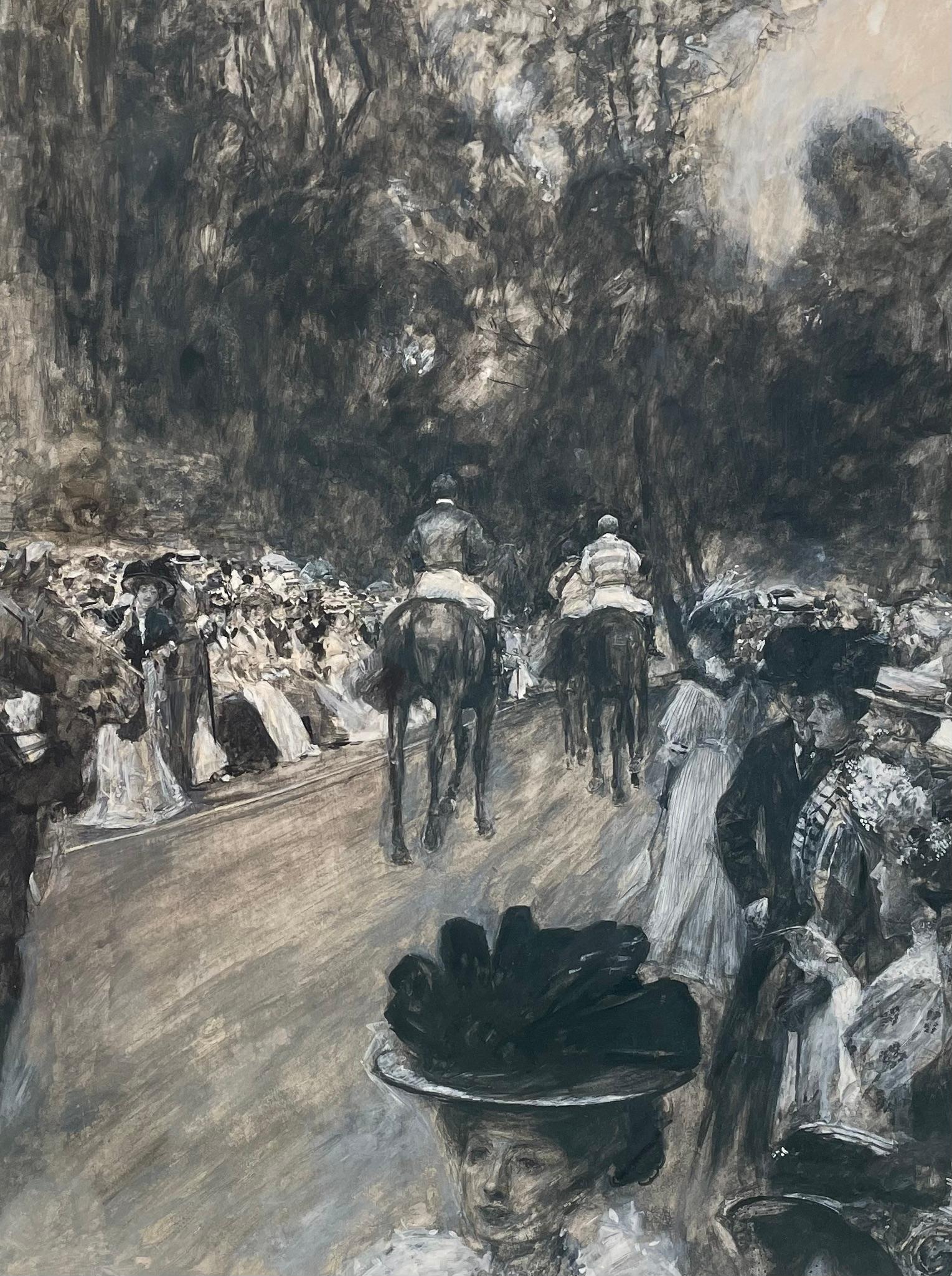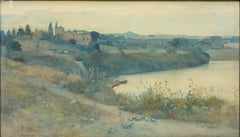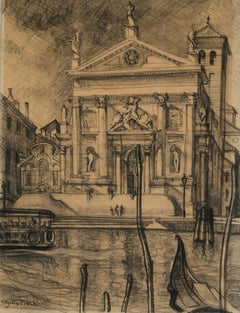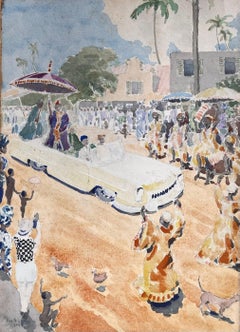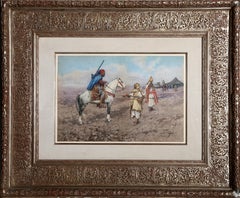Items Similar to The visit of the King of Persia Mozaffar al-Din Shah Qajar to the Ostend hippodr
Want more images or videos?
Request additional images or videos from the seller
1 of 7
Carlo BrancaccioThe visit of the King of Persia Mozaffar al-Din Shah Qajar to the Ostend hippodr1899
1899
$19,149.89
£14,126
€16,000
CA$26,533.14
A$28,809.83
CHF 15,256.91
MX$353,125.98
NOK 188,810.30
SEK 178,415.74
DKK 121,805.78
About the Item
Carlo Brancaccio ( Naples 1861 – 1920 ), The visit of the King of Persia Mozaffar al-Din Shah Qajar to the Ostend hippodrome
Watercolor on paper cm 74,5 x 125 signed ( Carlo Brancaccio ) and dated ( 1899 ) lower left.
Born in 1861, the Neapolitan painter Carlo Brancaccio leaves in 1883 the mathematics studies to devote himself exclusively to the painting, guided by the advice of E. Dalbono, his close friend and painter, at the beginning of his career. Appreciated landscape painter, able to elaborate a well-liked personal research, though moving from the adoption of instances and figurative themes common to other painters active in the same period, Brancaccio favored the glimpses and views set in Naples by fixing them, as Schettini writes, in “impressions in which the precision of the landscape reference was lyrical in a spiritual and suffused atmosphere. In this way he realized in personal terms a harmonious synthesis of the two opposing ways in which landscape painting was then conceived and which was headed respectively to Dalbono and Migliaro: the first, inventor of a dream Naples, the other, precise engraver of places and faces” (see A. Schettini, Cento pittori napoletani, 1978).
Within the Brancaccio’s production, the illustration of lively everyday life scenes painted “en plein air” becomes more spontaneous and, at the same time, accurate and gracious after his transfer to Paris: in the capital of Belle Époque, in fact, the Neapolitan painter approaches a brighter palette and a more modern ductus, following the latest impressionist experiments. Just this period refers to this watercolor, in which Brancaccio painted in 1899 the Ostend racecourse, destroyed during the Second World War. The eclectic architecture of the circuit, designed in 1883 by Antoine Dujardin on an area occupied originally by the ancient Napoleonic fortress called “Fort Royal”, is depicted by the Neapolitan painter with absolute detailed attention: the small castle, the central tribune, the two towers rhythmically mark the structure of the hippodrome, which quickly became theatre of the transalpine worldly life.
The Ostend racecourse, called Wellington, headed by Duke Arthur Wellesley, who inaugurated with King Leopold II, the horses’ races held there in 1883, was also used as a prestigious place for official visits, to the Belgian town, of illustrious political personalities of the time, such as Persia Shah, Mozaffar ad-Din Shah Qajar. Just the fifth Qajar king of Persia is depicted by Brancaccio, leaning against the railing, in the foreground, in the lower part of the painting: the curious mustachio, the typical red fez, the long elegant overcoat characterise the figure of the Iranian king, surrounded by a group of notables and army officers. Authentic portrait placed by the Neapolitan painter in a vague crowd run in a daunting day in a hippodrome teeming with faces, glances, gestures, gauge of the trembling world of Belle Époque, the presence of the King of Persia makes the painting an important historic document of the relations established between East and West at the end of the 19th century.
- Creator:Carlo Brancaccio (1861 - 1920, Italian)
- Creation Year:1899
- Dimensions:Height: 29.53 in (75 cm)Width: 49.22 in (125 cm)
- Medium:
- Movement & Style:
- Period:
- Condition:
- Gallery Location:Roma, IT
- Reference Number:1stDibs: LU1927210188302
About the Seller
5.0
Vetted Professional Seller
Every seller passes strict standards for authenticity and reliability
1stDibs seller since 2022
5 sales on 1stDibs
Typical response time: 13 hours
- ShippingRetrieving quote...Shipping from: Roma, Italy
- Return Policy
Authenticity Guarantee
In the unlikely event there’s an issue with an item’s authenticity, contact us within 1 year for a full refund. DetailsMoney-Back Guarantee
If your item is not as described, is damaged in transit, or does not arrive, contact us within 7 days for a full refund. Details24-Hour Cancellation
You have a 24-hour grace period in which to reconsider your purchase, with no questions asked.Vetted Professional Sellers
Our world-class sellers must adhere to strict standards for service and quality, maintaining the integrity of our listings.Price-Match Guarantee
If you find that a seller listed the same item for a lower price elsewhere, we’ll match it.Trusted Global Delivery
Our best-in-class carrier network provides specialized shipping options worldwide, including custom delivery.More From This Seller
View AllVilla of Claudius of Lorraine
Located in Roma, RM
Norberto Pazzini (Verucchio 1856 - 1937), Villa of Claudius of Lorraine
Watercolor on paper 34 x 56 cm signed and dated "91" lower left, at the
back: inscribed "Norberto Pazzini 18...
Category
Late 19th Century Other Art Style Landscape Drawings and Watercolors
Materials
Watercolor
Project for a new mobility in Venice
Located in Roma, RM
Virgilio Marchi (Livorno 1895 – Rome 1960), Project for a new mobility in Venice
Pencil and charcoal drawing 35 x 27 cm signed lower left.
Provenance...
Category
Early 20th Century Futurist Landscape Drawings and Watercolors
Materials
Paper, Charcoal, Pencil
Old Marinella coastal road, on the right the Fort of Carmine
Located in Roma, RM
Salvatore Candido (Naples 1798 - 1869), Old coastal road Marinella, on the right the Forte del Carmine
Oil painting on paper pasted on board 20 x 29 cm, unsigned.
Category
Early 19th Century Academic Landscape Paintings
Materials
Board, Oil, Paper
Santa Lucia, Naples
Located in Roma, RM
Salvatore Candido (Naples 1798 - 1869), Santa Lucia, Naples
Oil painting on paper pasted on board 20 x 29 cm, unsigned.
Category
Early 19th Century Academic Landscape Paintings
Materials
Paper, Oil, Board
The Palatine, Rome
By Orfeo Tamburi
Located in Roma, RM
Orfeo Tamburi (Jesi 1910 - Ermont 1994), The Palatine, Rome (1945)
Oil painting on canvas 60 x 70 cm signed and dated 45 lower right.
Bibliography: Orfeo Tamburi l'opera dipinta/L'...
Category
Mid-20th Century Other Art Style Landscape Paintings
Materials
Canvas, Oil
Price Upon Request
The circus has arrived
Located in Roma, RM
Noel Quintavalle (Ferrara 1893 - Alassio 1975), The circus has arrived (1950)
Oil painting on canvas 60 x 79 cm signed and dated 1950 lower right
Category
Mid-20th Century Other Art Style Landscape Paintings
Materials
Canvas, Oil
You May Also Like
Isidore Pils (1813-1875) An Orientalist scene, signed watercolor
By Isidore Alexandre Augustin Pils
Located in Paris, FR
Isidore Pils (1813-1875)
An Orientalist scene
Signed lower left
Pencil and heightenings of watercolor on paper
15 x 24 cm
paper yellowed by time, stains and a small repaired tear on the upper right edge.
In a modern mount 40.5 x 53 cm
Isidore-Alexandre-Augustin Pils (1815–1875) was a French academic painter of religious and military subjects.
Pils was born in Paris as the son of a soldier François Pils. At the age of twelve, he studied with Guillaume Guillon-Lethière for four years.
In 1831 he became a student at the École des Beaux-Arts and studied under François-Édouard Picot.
He competed for the Prix de Rome, which he won in 1838 for a history painting, St. Peter Healing a Lame Man at the Door of the Temple.
Although in poor health, Pils then spent the customary three years at the French Academy in Rome at the Villa Medici, which then had Jean Auguste Dominique Ingres as its director. While in Italy he visited Naples, Venice, and Florence.
Pils's earlier paintings have religious themes. In 1849 he completed his most famous work, Rouget de L'Isle Singing La Marseillaise, which now resides at the Musée historique de Strasbourg. After experiences travelling with French troops through the Crimea, his themes took on military and nationalistic subjects. He later produced many military scenes during the siege of Paris during the Franco-Prussian War of 1870.
Pils was appointed professor of painting at the École des Beaux-Arts in 1863 but left the same year for two years in Algeria. In 1868 he was elected to seat #14 of the Académie des Beaux-Arts. Among his students were Adrien Moreau...
Category
1870s Academic Figurative Drawings and Watercolors
Materials
Watercolor
Finely Detailed British Watercolor of an Eid El Fitri Celebration in Lagos
Located in Cirencester, Gloucestershire
Medium: Watercolour on paper, unframed
Size: 14 inches (height) x 10 inches (width)
Signed: Yes
Condition: Sound condition, with some minor signs of foxing visible
Provenance: Privat...
Category
Mid-20th Century Impressionist Landscape Paintings
Materials
Watercolor
North African Orientalist Scene, Original Watercolor on Paper by Giulio Rosati
Located in Long Island City, NY
North African Orientalist Scene (Horseman and Nomadic Traders)
Giulio Rosati, Italian (1857–1917)
Date: circa 1880
Watercolor on Paper, signed lower righ...
Category
1880s Academic Animal Drawings and Watercolors
Materials
Watercolor
Epsom- The Race Over
By James Pollard
Located in Bristol, CT
Image Sz: 13 3/4"H x 19 1/4"W
Frame Sz: 21"H x 26"W
Extremely rare colour sporting aquatint engraving by James Pollard (1792-1867) depicting "Epsom The Race Over' published by Arth...
Category
19th Century Figurative Drawings and Watercolors
Materials
Aquatint
William Hatherell - Early 20th Century British Grisaille Horse Racing Scene
Located in London, GB
WILLIAM HATHERELL
(1855-1928)
At the Races - Leaving the Parade Ring
Grisaille watercolour
Framed
58 by 45.5 cm., 22 ¾ by 18 in.
(frame size 74.5 by 61 cm., 29 ¼ by 24 in.)
Willi...
Category
Early 20th Century Realist Figurative Drawings and Watercolors
Materials
Watercolor
Hajj to Mecca - British Impressionist Orientalist art figurative oil painting
Located in Hagley, England
This superb British Orientalist oil painting is by noted artist Edmund Aubrey Hunt. Painted in 1916, the composition is a Hajj or pilgrimage to Mecca. Hunt and his second wife Maude ...
Category
1910s Impressionist Figurative Paintings
Materials
Oil
More Ways To Browse
Officer Portrait
Carlo Painter
Qajar Art
Shah Qajar
Qajar Painting
Fortune Magazine Cover
Mid Century Architectural Drawing
Art Western Watercolor
Pen And Ink Sketch
Watercolor Painting San Francisco
Desert Drawings
Fisherman Watercolor
Watercolor Cow
Cattle Watercolor
American 19th Century Watercolors
Francis Harvey
Jerusalem Watercolor
Watercolor Marine Art
